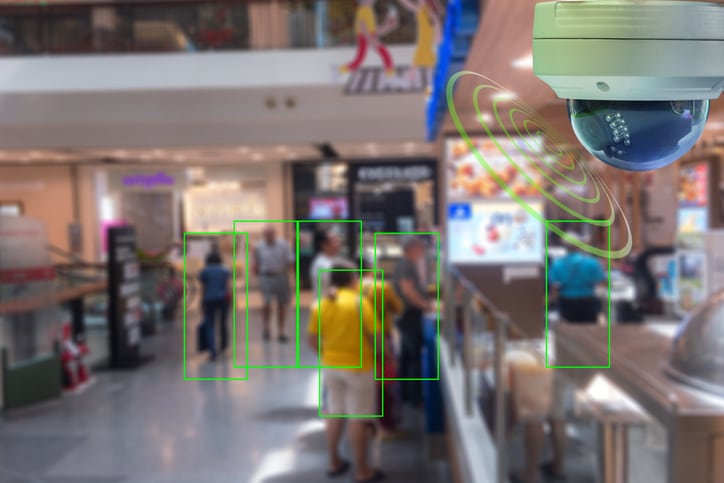
In today’s fast-paced business environment, security is paramount. Modern small business owners face many security challenges, from vandalism and theft to unauthorized access and data breaches. Traditional security measures are often fragmented and inefficient, making creating a cohesive and effective security strategy difficult. Enter integrated security systems—a game-changer for businesses looking to streamline operations while enhancing security.
Integrated security systems combine various security measures, such as access control, video surveillance, and intrusion detection, into a comprehensive unit. This method simplifies security management and provides a robust framework for protecting business assets. This blog post will explore how integrated security systems can revolutionize your business operations, offering protection and efficiency.
Video surveillance has come a long way from grainy, black-and-white footage. Today’s advanced cameras offer high-definition video, night vision, and facial recognition capabilities. These features are crucial for capturing clear, detailed images that can be used for identification and analysis. Modern surveillance cameras are also equipped with cloud storage, enabling businesses to store large amounts of footage without cluttering physical space.
Integrating video surveillance with other security components enhances real-time monitoring and incident response. For example, if an intruder tries to enter your premises, the integrated system can immediately alert security personnel while capturing the event on camera. This coordinated response ensures that incidents are dealt with promptly and effectively.
Beyond security, video analytics can offer valuable insights for optimizing business operations. By analyzing foot traffic patterns, customer behavior, and employee productivity, businesses can make data-driven decisions to improve efficiency and customer experience. For instance, retail stores can adjust staffing levels based on peak hours identified through video analytics.
Access control is essential for managing who enters and exits your premises. Various mechanisms, including biometric systems (fingerprint or facial recognition), RFID cards, and mobile-based solutions, are available. These advanced systems offer different levels of security and convenience, allowing businesses to choose what best fits their needs.
One of the primary benefits of using access control systems is streamlined entry and exit processes. Employees can easily access authorized areas without the hassle of traditional keys, which can be lost or duplicated. This not only enhances your security but also improves overall workflow efficiency.
By restricting access to sensitive areas of the building, businesses can significantly reduce the risk of internal theft and unauthorized access. With integrated systems, access control data can be monitored in real-time and cross-referenced with video surveillance footage, providing a comprehensive security solution.
Intrusion detection systems are designed to monitor and identify any unauthorized entry into a building or area. These systems use various sensors, alarms, and motion detectors to detect potential threats. When integrated with other security components, they offer a multi-layered approach to security.
Integration allows for a coordinated response between detection systems, surveillance, and access control. For instance, if a motion detector senses movement after hours, the system can trigger an alarm, lock all doors, and notify security personnel while recording the event on video. This seamless operation minimizes the risk of human error and ensures a swift response.
Real-time alerts are crucial for mitigating security breaches. Integrated systems can send instant notifications to designated personnel via SMS, email, or a mobile app. Automated responses for tasks, such as locking doors or activating lights, can further deter potential intruders and mitigate damage.
A centralized security management system allows businesses to monitor and control all security components from a single interface. This reduces complexity and enhances response times, as security personnel can quickly assess and address any issues.
With all security data consolidated in one place, business owners can efficiently identify and respond to incidents. This streamlined approach to security saves time and reduces the likelihood of oversight or miscommunication, ensuring that your security measures are always up-to-date and effective.
Automation plays a significant role in modern security systems. Tasks that once required manual monitoring, such as checking surveillance footage or unlocking doors, can now be automated. Examples include:
One of the most compelling benefits of integrated security systems is cost efficiency. By combining multiple security functions into a single system, businesses can reduce the need for separate installations and maintenance. This not only lowers operational costs but also simplifies budgeting and resource allocation.
Investing in integrated security systems offers long-term benefits. Reduced operational costs, increased efficiency, and the prevention of costly security breaches offset the initial investment. Businesses can also leverage these systems to optimize operations, resulting in further financial gains.
Preventing security breaches can save businesses a significant amount of money. The cost of a single breach can be devastating, involving not just the loss of assets but also potential legal fees and reputational damage. Integrated systems minimize these risks, offering peace of mind and financial security.
The future of integrated security systems is promising, with advancements in predictive analytics, artificial intelligence (AI), and the Internet of Things (IoT). Predictive analytics can forecast potential security threats, allowing businesses to take proactive measures. AI can enhance surveillance capabilities, enabling smarter and more efficient monitoring. IoT devices can seamlessly integrate with existing systems, creating a more interconnected and responsive security network.
As security threats evolve, so must the systems designed to counter them. Integrated security systems are adaptable, allowing businesses to stay ahead of emerging threats. Regular updates and advancements ensure these systems remain effective, offering continuous protection.
Integrated security systems are a crucial tool for modern businesses. They offer enhanced surveillance, improved access control, efficient intrusion detection, centralized management, and cost efficiency. By investing in these systems, companies can protect their assets, streamline operations, and stay ahead of security threats.
If you want to learn more about how integrated security systems can benefit your business, contact Security Systems of America for a personalized assessment and integration plan. Ensure your business is protected and efficient with the latest in security technology.